LEED SPOTLIGHT: Vancouver Convention Centre
Posted by lorne, 25th November, 2011 11:44 pm
On the waterfront, in the heart of Vancouver, British Columbia, sits the Vancouver Convention Centre. Among its long, long list of awards and certifications, the centre has earned itself a platinum LEED rating.
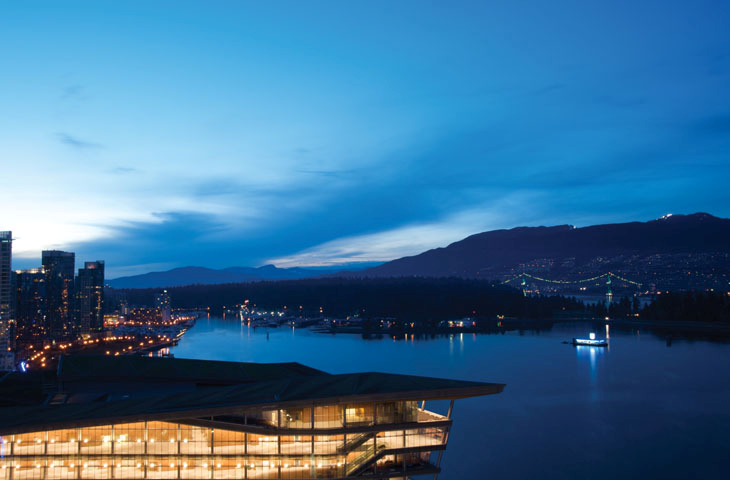
In 2009, the Vancouver Convention Centre opened its West Building, which exhibited the finest in sustainable design. The building has the largest non-industrial living roof in North America, making it home to thousands of indigenous coastal plants and a wide-scale rainwater irrigation program. Heating and cooling in the building comes from a seawater treatment system, and along the shore sits an artificial reef providing prime habitats for a large number of underwater species.
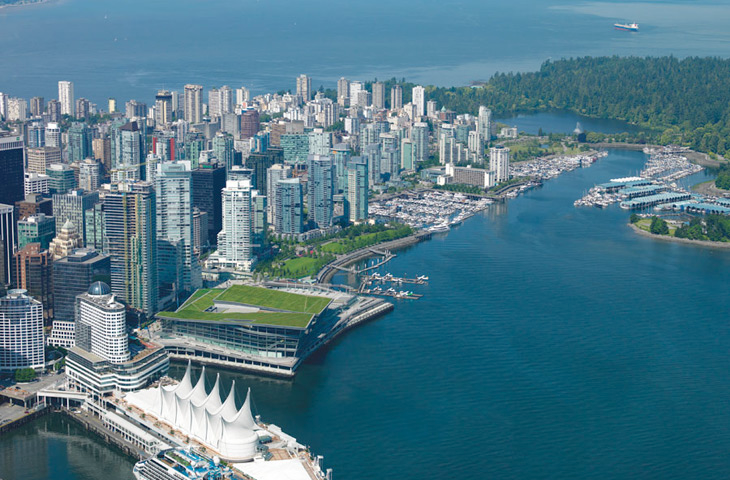
As if the centre’s green design wasn’t enough, they make sure their actions are just as environmentally friendly. An average of 180,000 kilograms of waste is recycled annually, while canned goods and disposable dishes are conscientiously avoided. Only locally grown foods are used, and leftovers go straight o nearby charities.

Pushing past the constraints of traditional urban planning to create a sustainable and environmentally proficient space, the government of British Columbia has created the ultimate convention centre. A leader in green design, the Vancouver Convention Centre brings together nature, locality, and architecture in an exemplary way. No wonder it’s the first convention centre in the world to become LEED platinum certified.

For more details: http://www.vancouverconventioncentre.com/
The Empire State Building Goes LEED Platinum
Posted by lorne, 18th November, 2011 2:51 am
Hello, My name is Edvard Bruun and I’m a new addition to the LeadingLEED blogging team. I’m a 2nd year University of Toronto Civil Engineering student, interested in sustainability and the urban environment.
The Empire State Building earning LEED Platinum certification marks an important landmark in the battle for urban sustainability. Since its completion in 1931, the 102-story tower has dominated the New York skyline, becoming an internationally recognized and admired structure. It seems fitting that a building that is so infused with ingenuity and originality should once again blaze a path for the rest of the world to follow.
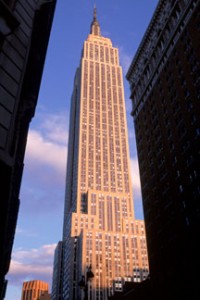
The idea for this green retrofit, the largest in the United States to date, was born primarily from economic reasoning. Anthony Malkin, who supervises the Empire State Building Company, stated in an interview:
“Everything that we’re doing at the Empire State Building is about business and, bottom line, that’s the first and most important thing”
Although not inline with an environmentalist’s perspective, his plan still benefits both the economic and natural spheres of society. The energy budget of the building is reduced by $4.4 million annually, carbon emissions are cut by 105,000 tons over a 15-year period, and all this results in a project payback period of less than 3 years.
In my opinion, the importance of this news goes beyond the accomplishment of achieving LEED platinum standards. This event also marks a change in corporate sentiment regarding sustainability. Profitability and sustainability have often incorrectly been seen as opposite sides of the economic spectrum, you can have one or the other, but never both. Through Anthony Malkin’s vision, the Empire State Building now stands in defiance of this naivety. As the Empire State Building reaps the benefits from environmental and economic synergy, the rest of the world is poised to follow.
The Guardian website doesn’t allow video embeds, so instead I’ve linked a short video on the changes to the Empire State Building below:
Empire State Building Goes LEED Platinum
Revolutionizing Plastic Recycling
Posted by lorne, 30th October, 2011 5:54 pm
Greetings, my name is Bo Wen, and as a Civil Engineering Student, I am interested in how modern civilization operate at both the micro and macro level, from processing of materials to construction of mega-structures.
It is sometimes easy to forget the complexity of materials when you are dealing with large structures. Plastic, being quite versatile in its material properties, can disguise itself in many forms, in every corner of the earth. It’s appearances and abilities are so impressive and practical, that we cannot spend a day without touching and using one.

Plastic Mountain
As you know, plastic, behind it’s glorious presence in our life, outside of our lives, its production and disposal are not pretty by any extend. So recycling them is a hot topic for many and a progressive agenda for some.
While it is important to recycle for the purpose of landfill diversion, do you know what it really means? Is 10% recyclable plastic a satisfactory performance for the world of recycling? It certainly isn’t comparing to the 90% rate for metal recycling.
Mike Biddle, calling himself a garbage man, is the President and founder at MBA Polymers, Inc.. He has devoted his entire life into maximizing the potential of plastic recycling. And with more plastic consumed around the world every year, the need for an efficient plastic recycling process is increasing.
As the plastic waste piled up, many first world nations started to transport them to third world nations, thus creating a string of health risks to local residents who ended up making a living off of “garbage”.
While many see plastics garbage as waste, Mike sees it as natural capital. The process of recycling is not only sustainable, it can be economically sound. Want to know how he made plastic recycling possible, check out his TedTalk below:
[youtube width=560 height=315]RD07GkmM2fc[/youtube]
If we can recycle plastic so efficiently, what else can we recycle in our life? Many. And that is what the LEED’s materials and resources credits all about — closing the loop by reduce, reuse and recycle, and Mike had definitely made the process of recycling more feasible and effective.
I hope you enjoyed the story about plastic recycling, let us know if you have any cool recycling stories!
Green School in Bali TED
Posted by lorne, 25th October, 2011 3:50 pm
GreenBuild – The Expo Hall
Posted by lorne, 20th October, 2011 4:35 pm

GreenBuild is the largest convention for any person or company even remotely related to the sustainable and ‘green’ building industry. To put it in perspective for those who could not attend; the book which help the names of all the exhibitors was thicker than many of my textbooks.
Here is a link for you to see for yourself: http://s36.a2zinc.net/clients/usgbc2011/usgbc2011/public/Content.aspx?ID=64&sortMenu=105000
The expo hall housed Green consultants, Developers, Contractors, Engineering Firms, Architecture firms, Third Party Reviewers and was dominated by an enormous assortment of manufacturers and suppliers.
Although I was amazed by some of the technology that the suppliers were showing, I was not interested in purchasing anything in bulk. Thus, in the interest of time, I stuck to gaining knowledge on how different firms and developers had plans to be LEED and improve internal LEED training.
A few exhibitors which really made an impression on me included:
Lend Lease – www.lendlease.com
I conversed with Lend Lease`s Sustainability Manager. We discussed the internal LEED training program they had put in place. Just as major Accounting Firms internally train their employers to become Chartered Accountants, now Building/Design firms can do the same! In the past decade, Lende Lease has completed over 2500 projects, including the:
Academic Joint Use Facility
Ocean Campus, City College of San Francisco, California
I was also pleasantly surprised to see LEEDuser as an exhibitor at the show.
LEEDuser is a great resource for anyone in the LEED industry and has many answers to all LEED credit related questions. www.LEEDuser.com is a partner of www.building-green.com
 .COM
.COM










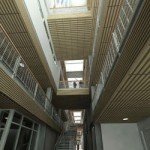
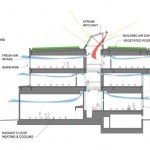
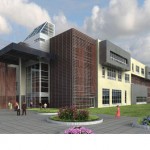

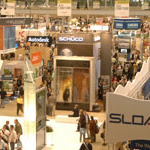
 .COM
.COM